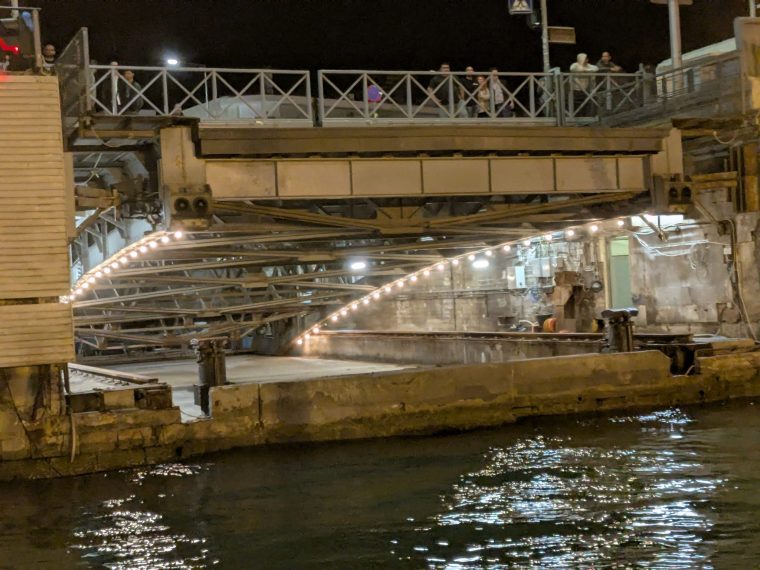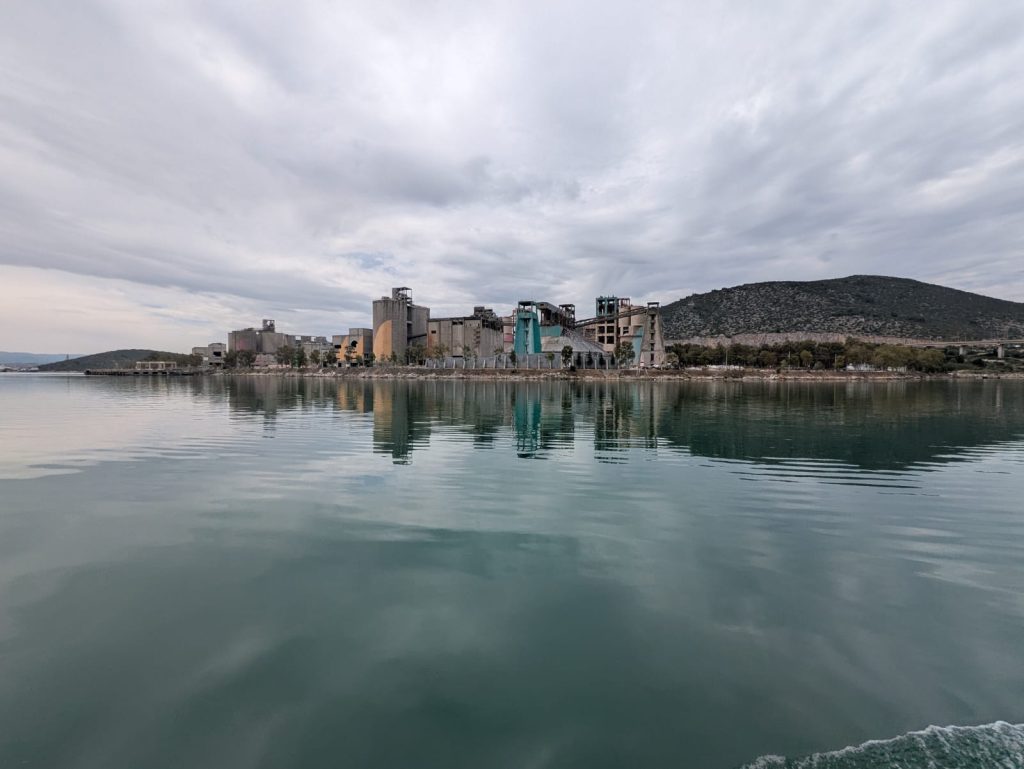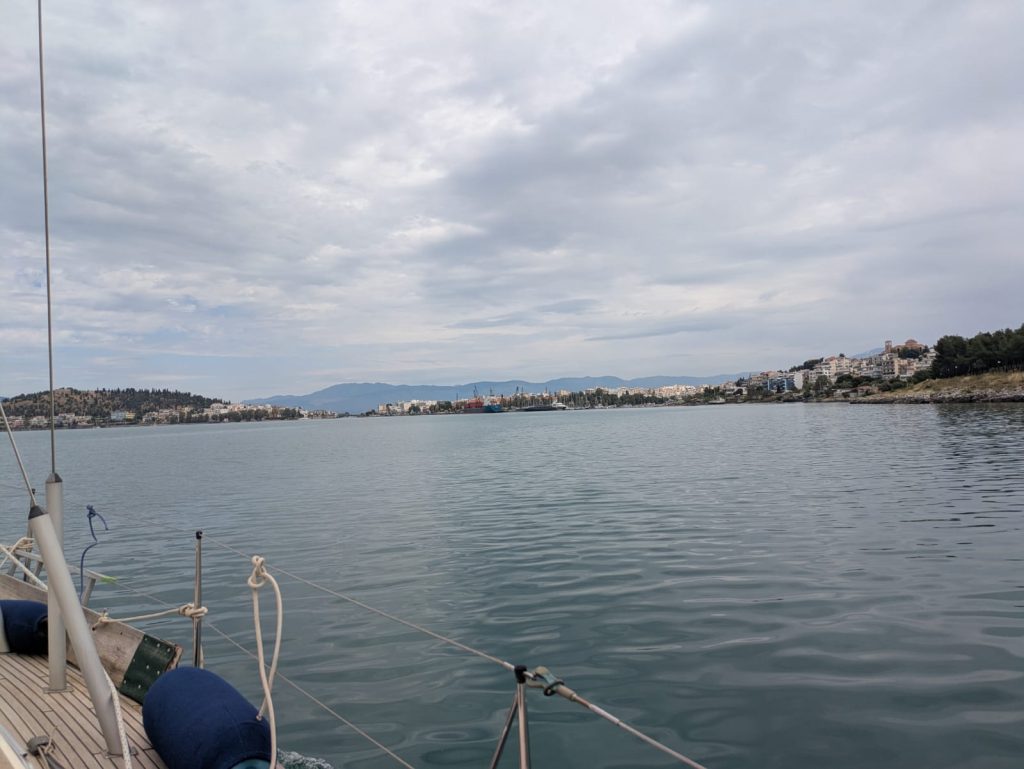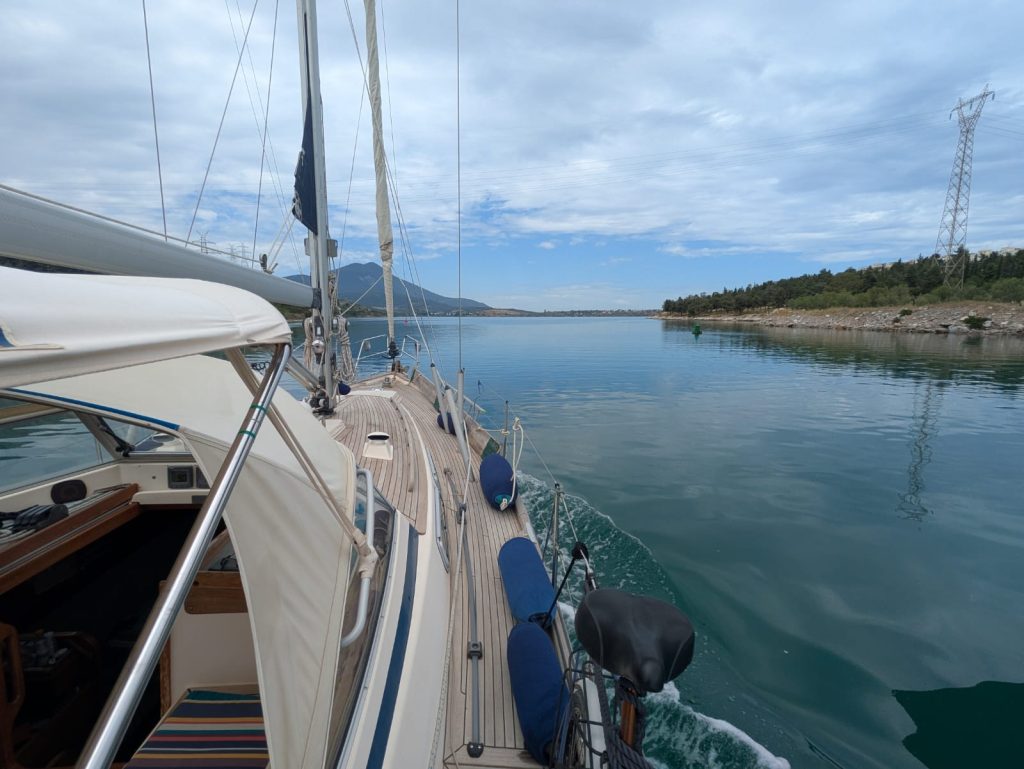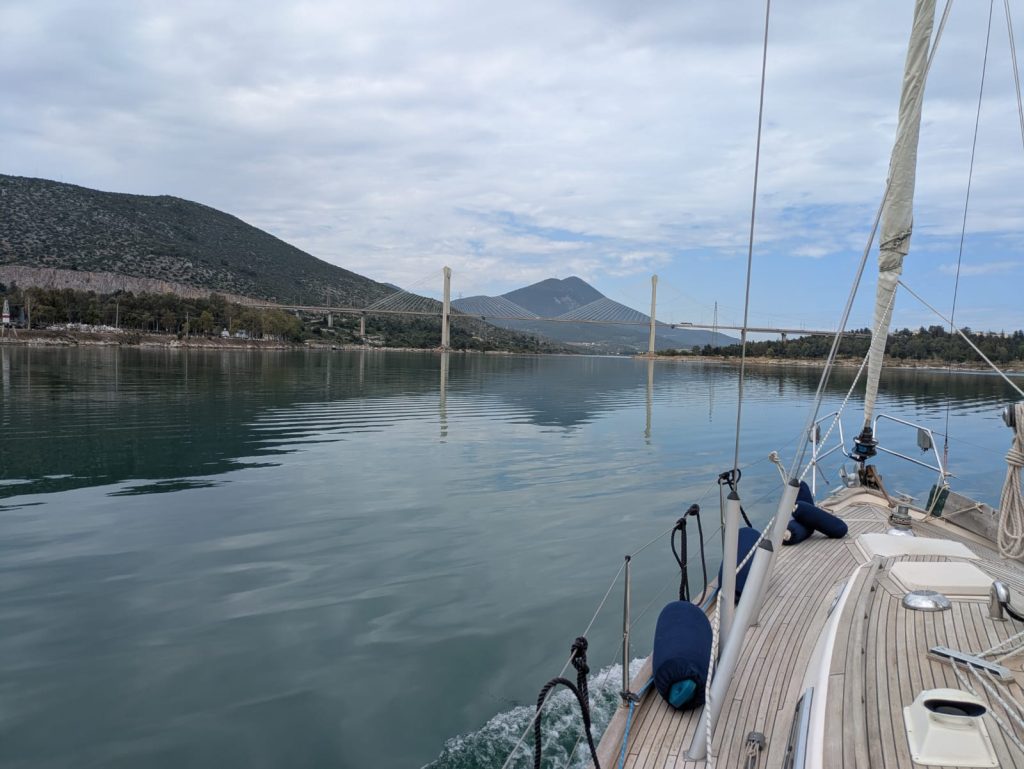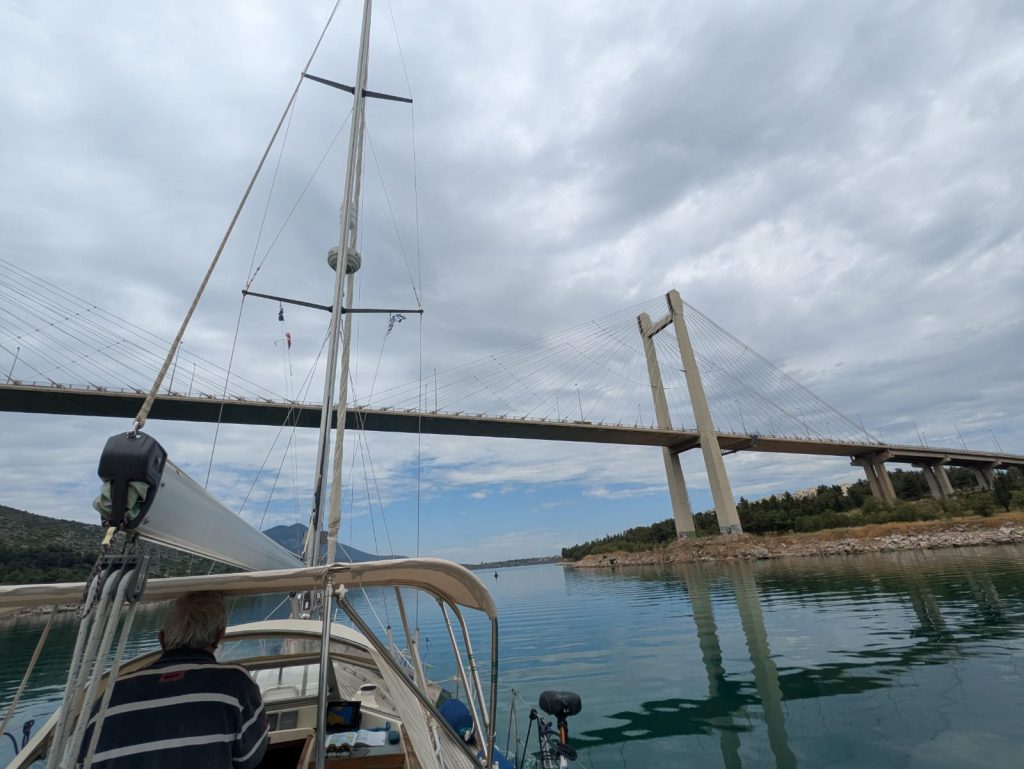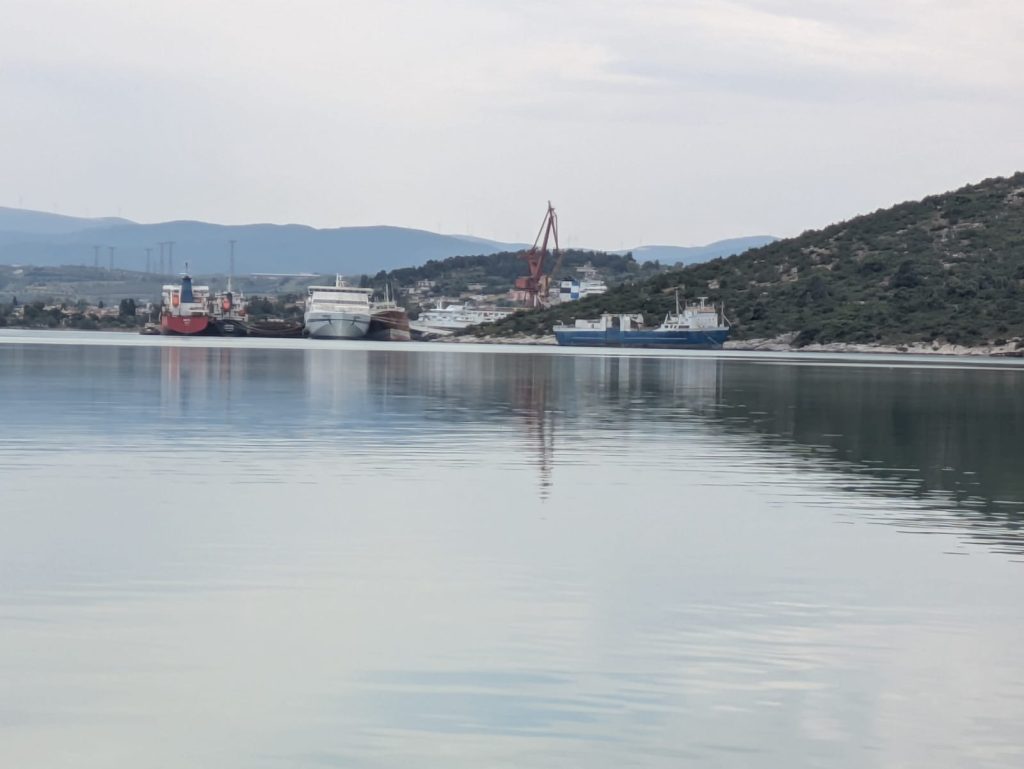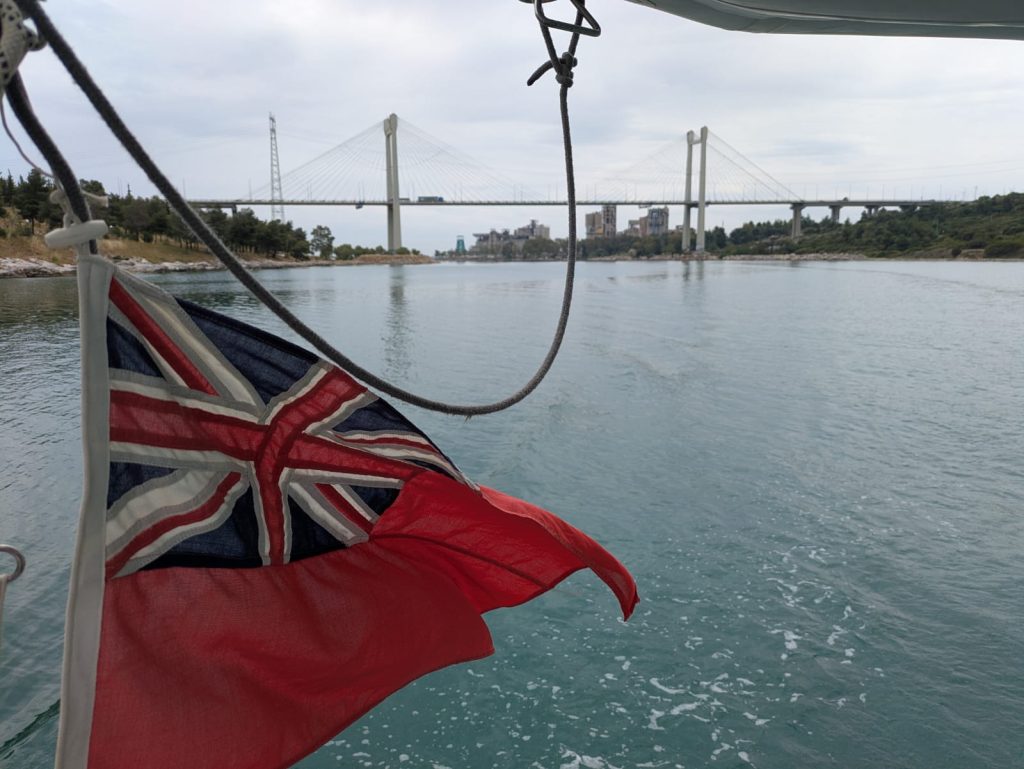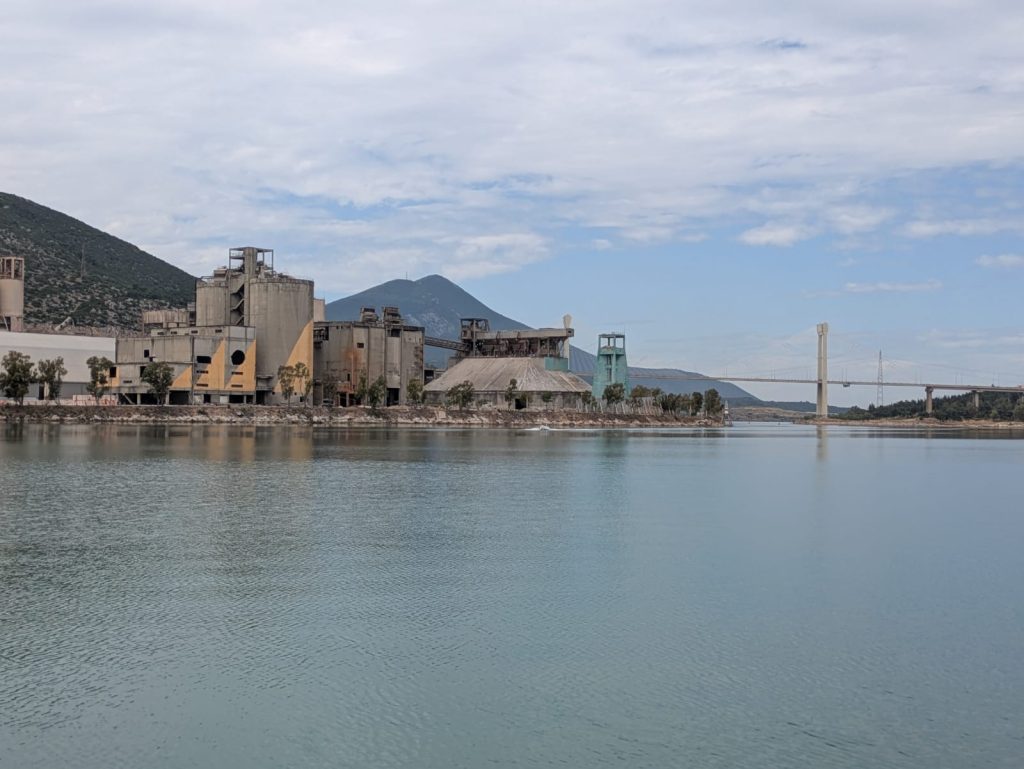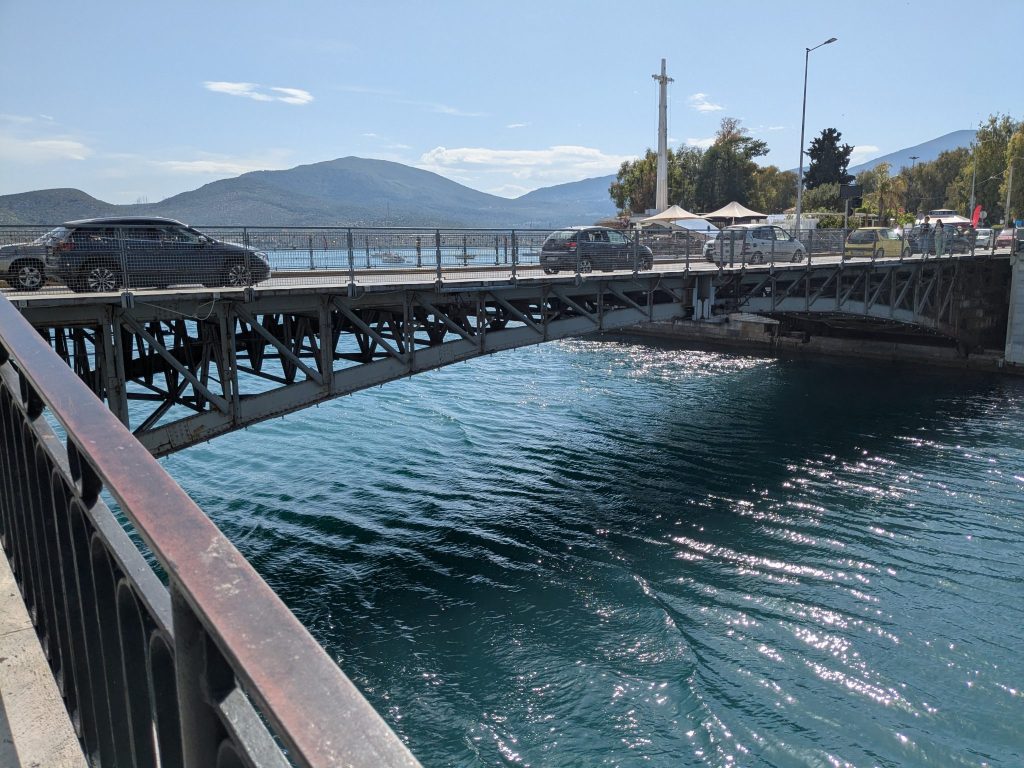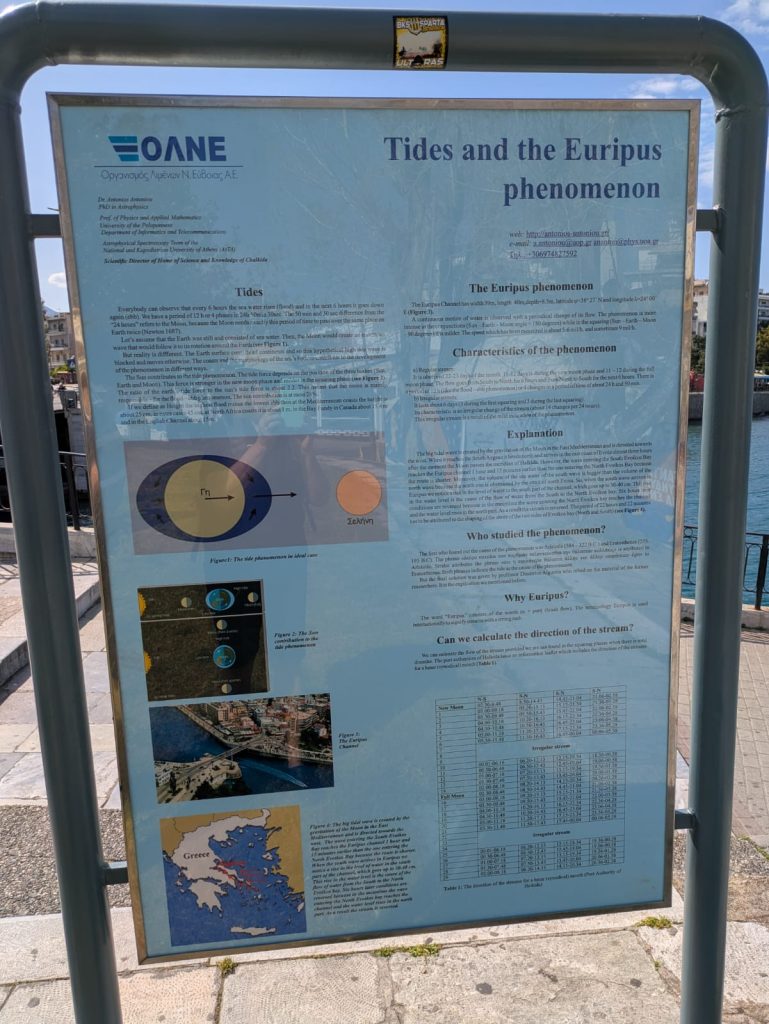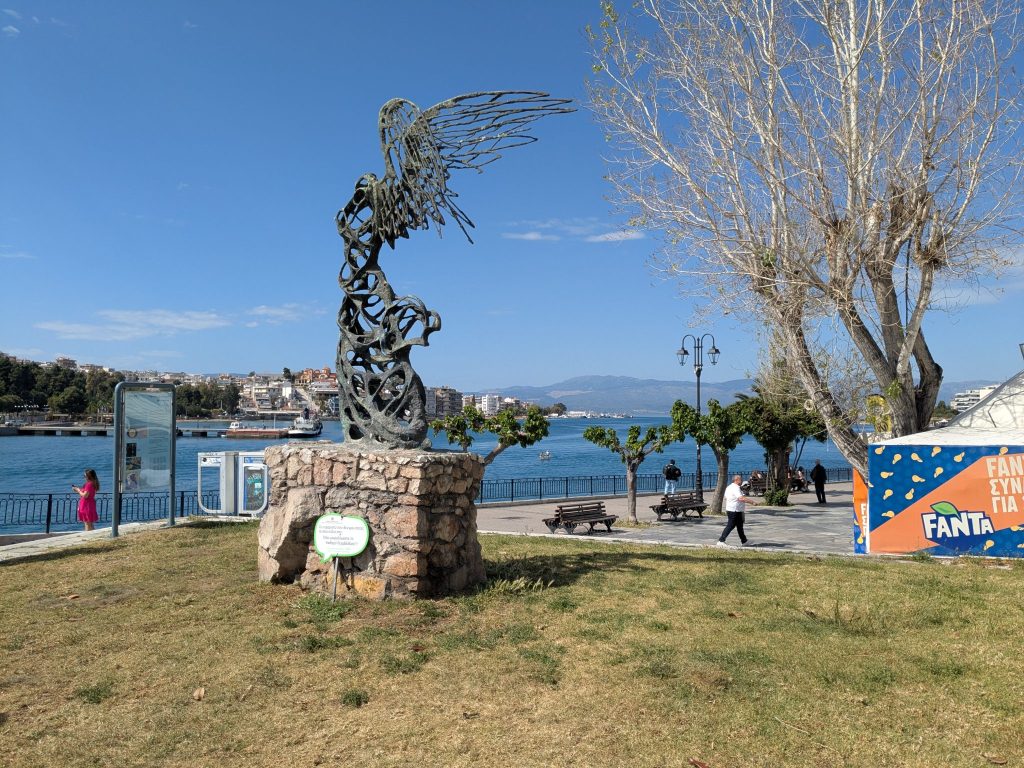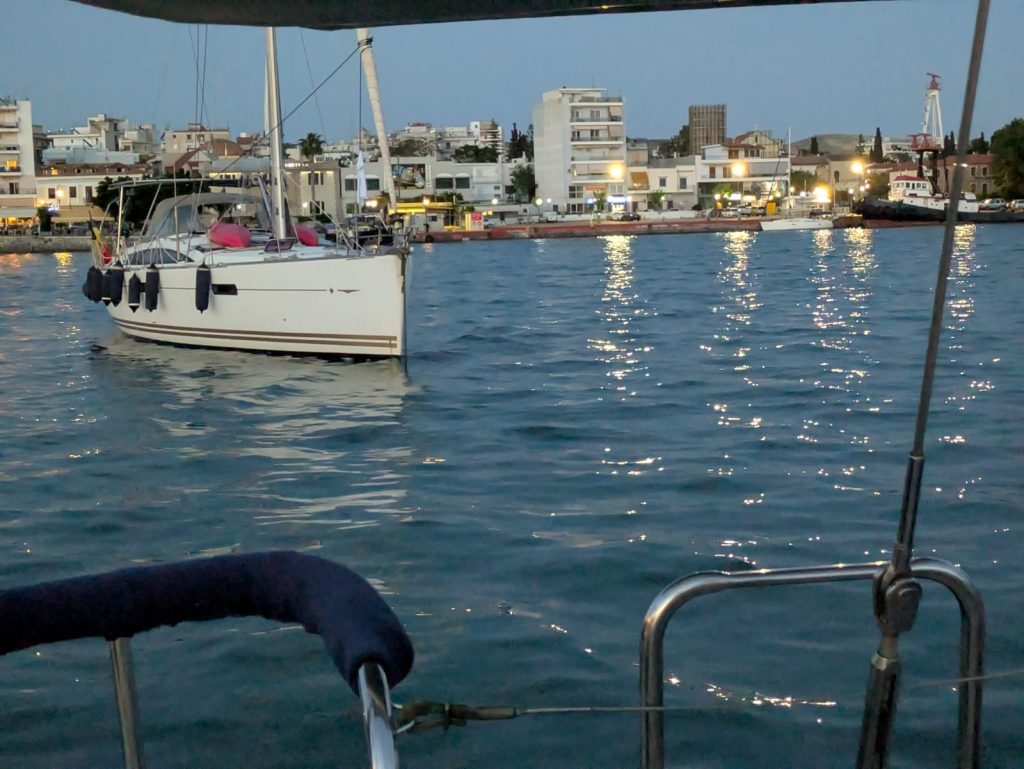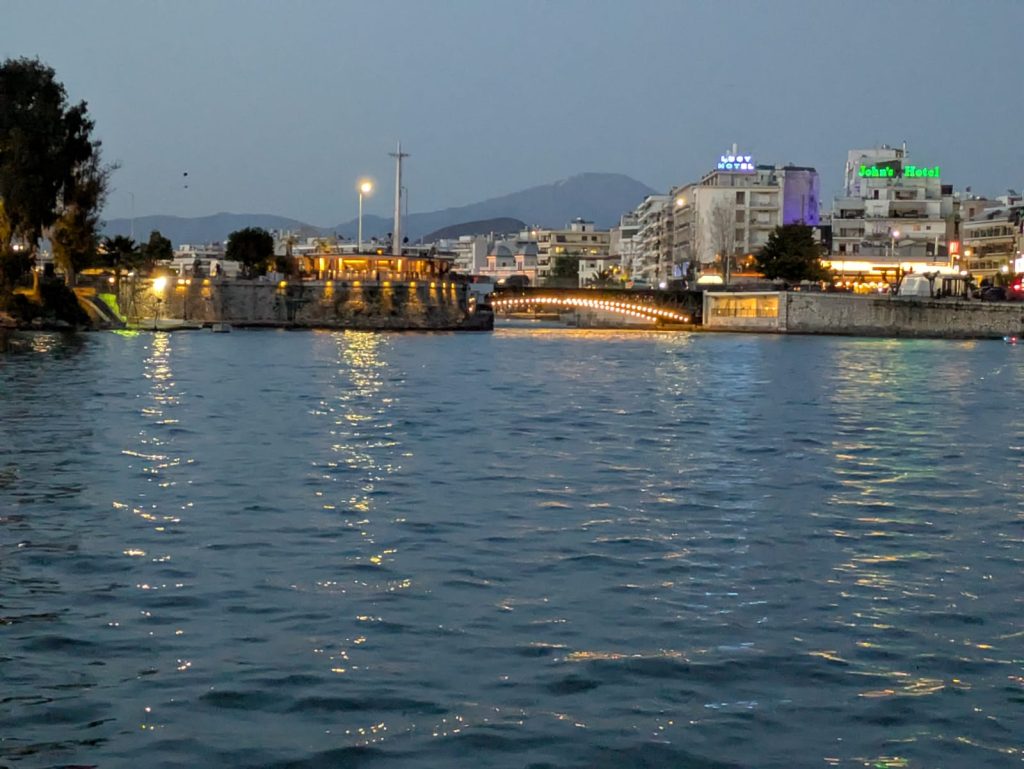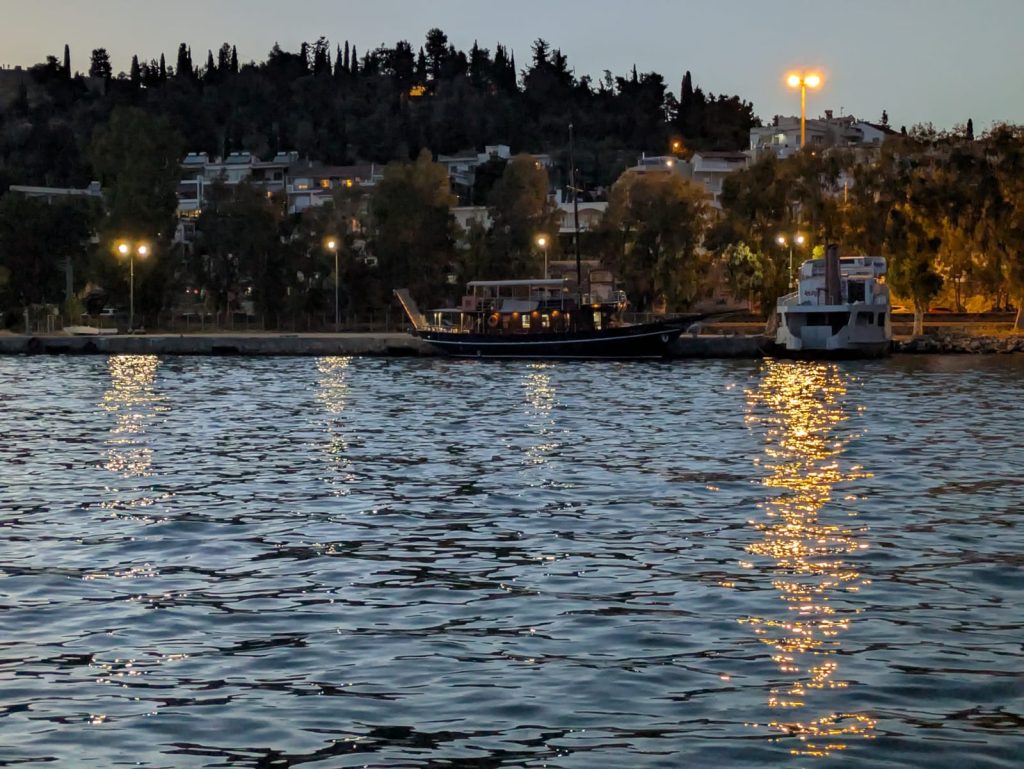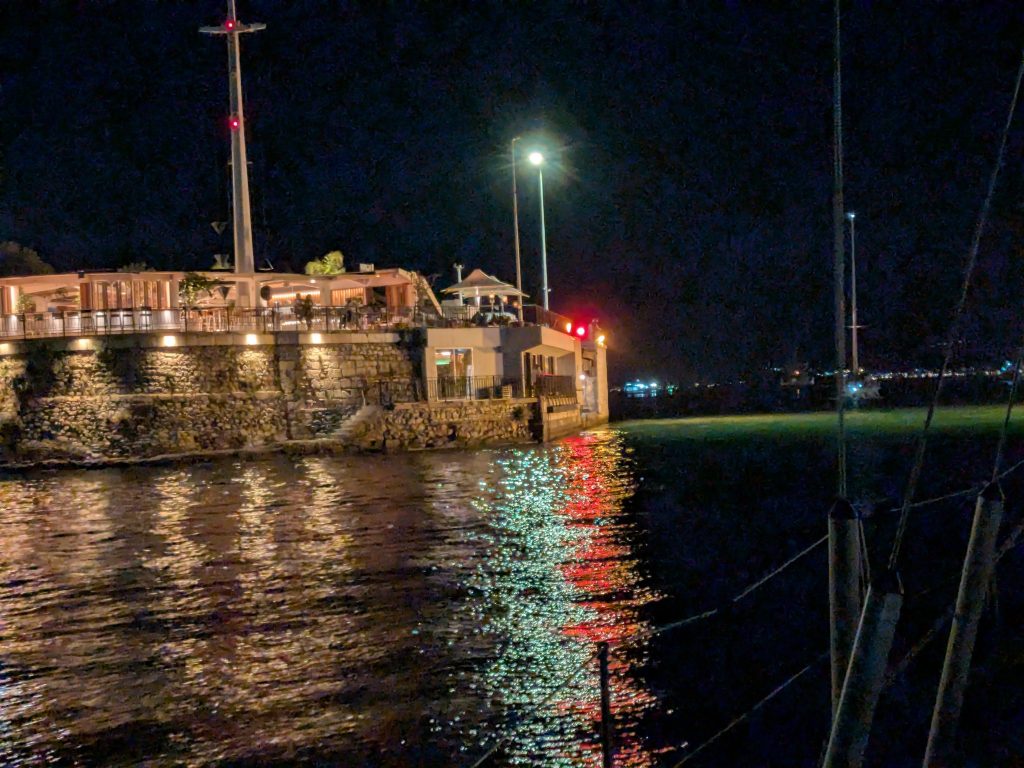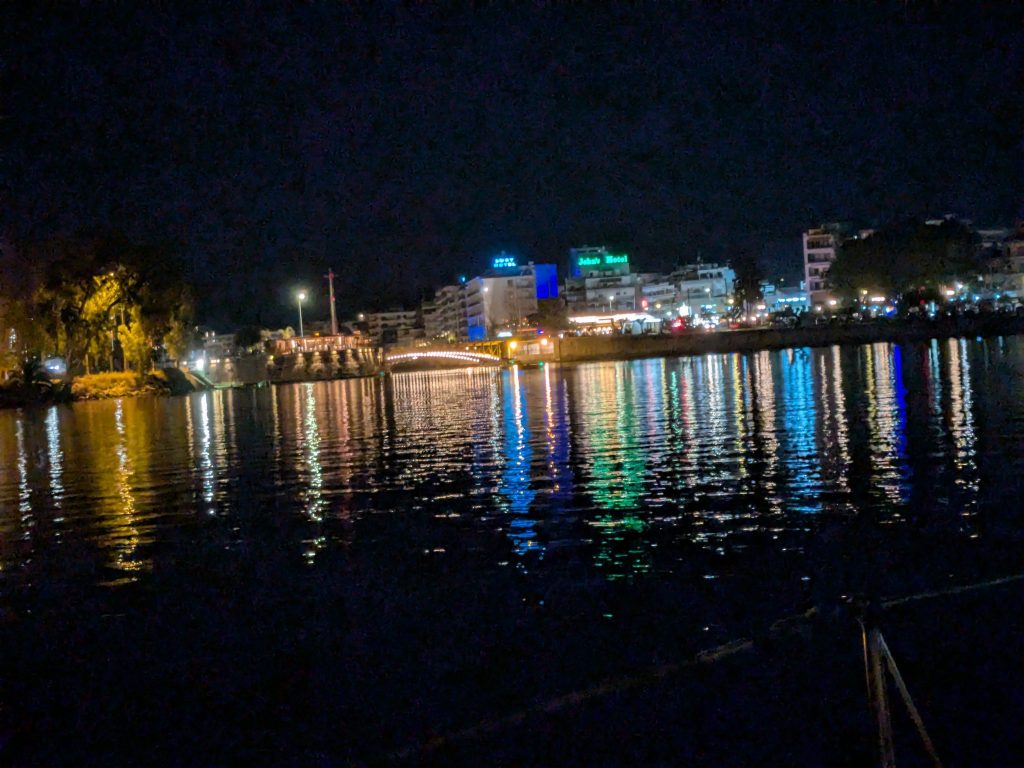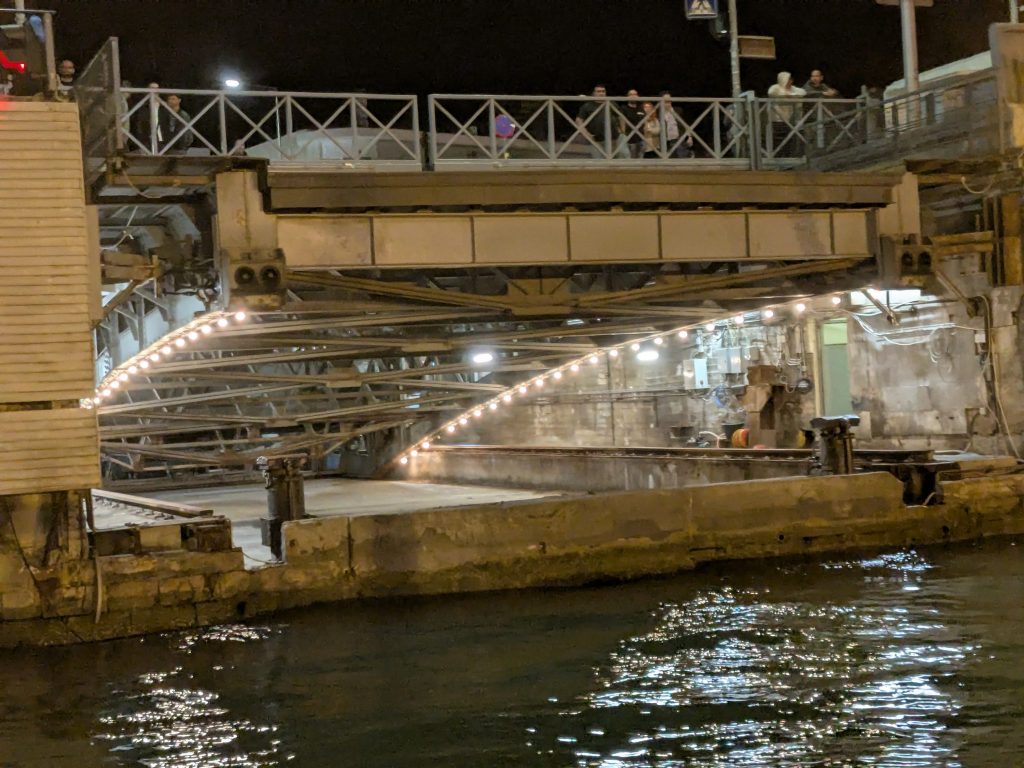We motored the 12 miles from Eritrea, under a very large suspension bridge to a large enclosed lagoon with the Chalkida bridge at the northern end. The procedure is to either anchor near the bridge or tie up on the commercial dock wall, go and pay for the passage, and wait, listening on VHF channel 12 from 2130 for further instructions. Finding where to pay presented the biggest challenge, with visits to two port authority offices, an army barracks with armed soldiers all giving us the run around. We finally found the correct office, paid our €35, had a cold drink, returned to Jacana and waited. At about 2230 we (7 sailing boats in total) got the radio call to prepare to transit the bridge. It finally started retracting (it’s not a lifting bridge) at about 2300, and after letting a cargo vessel go first we made it through the bridge at about 2315. We then went on for about a mile and anchored in a large bay round the corner for the night.
So what’s special about this bridge. Because it’s only about 35m wide between the north and south Evia channel, currents flow at up to 6.5 knots, depending on the day in the lunar month and weather and unlike tides in the UK, at certain times of the month, the flow is erratic and therefore unpredictable. So the authorities make informed judgement as to the best time, between 2200 and 0200 to open the bridge and let boats traverse south to north and vice versa.
So what’s special about this bridge. Because it’s only about 35m wide between the north and south Evia channel, currents flow at up to 6.5 knots, depending on the day in the lunar month and weather and unlike tides in the UK, at certain times of the month, the flow is erratic and therefore unpredictable. So the authorities make informed judgement as to the best time, between 2200 and 0200 to open the bridge and let boats traverse south to north and vice versa.

